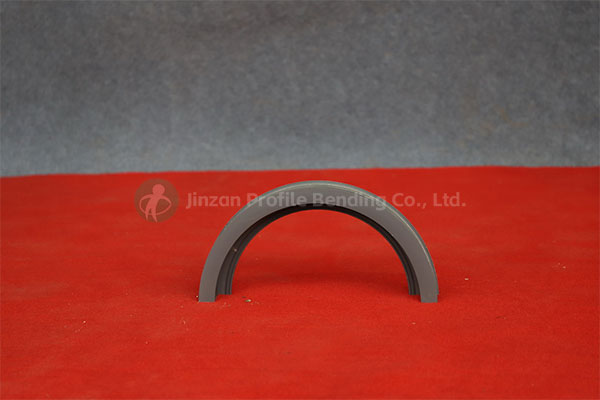Redefining the construction industry with innovative solutions, cuttin-edge technology and sustainable practices
Profile Bending 2025-11-08
In modern manufacturing and construction industries,metal arc bending plays a vital role in shaping materials into precise curved forms that meet structural, aesthetic, and functional demands. Whether for architectural façades, automotive frames, aerospace components, or industrial pipelines, the ability to bend metal accurately without compromising its strength or surface quality is essential. With the advancement ofhigh-precision bending equipment and intelligent control systems, today’s metal arc bending processes achieve levels of accuracy and efficiency that were unimaginable just a few decades ago.
1. The Essence of Metal Arc Bending Technology
Metal arc bending is acold forming process that reshapes straight metal profiles—such as steel, aluminum, or stainless steel—into arcs or complex curves using controlled mechanical force. The process relies on bending machines equipped with rollers or dies that apply consistent pressure along the metal’s length.
Unlike traditional manual bending, modern automated bending equipment ensuresuniform curvature, minimal deformation, and precise control over the bend radius. The result is a perfectly smooth arc that maintains the material’s original strength and surface integrity.
High-precision arc bending is widely used in industries such as:
Construction – For curved beams, railings, façades, and decorative structures.
Transportation – In manufacturing automotive frames, ship hulls, and railway components.
Aerospace and Energy – For lightweight structural frameworks and piping systems that require exact curvature.
2. The Role of High-Precision Equipment in Quality and Accuracy
The quality of any arc-bent component depends largely on the precision of the equipment used. ModernCNC-controlled bending machines have transformed this process by integrating digital feedback systems, servo-driven rollers, and programmable pressure control.
Key advantages of high-precision equipment include:
Accurate Bend Radius Control: Digital measurement and feedback allow operators to achieve exact curvature specifications, even for tight radii.
Uniform Force Distribution: Intelligent systems ensure even pressure application, preventing material wrinkling or cracking.
Consistency and Repeatability: Once programmed, CNC systems can reproduce identical bends across large production batches with near-zero deviation.
Surface Protection: Advanced roller designs minimize friction and eliminate surface scratches, which is especially important for stainless steel or aluminum materials used in visible structures.
With these technologies, manufacturers can producecurved components with perfect geometry, superior mechanical performance, and aesthetic appeal.
3. Material Adaptability and Process Flexibility
High-precision arc bending equipment can accommodate a wide range of metals and profiles. Fromthin-walled tubes toheavy structural beams, the process can be customized according to the material’s strength, elasticity, and intended application.
Steel Bending: Provides robust structural integrity for industrial and architectural frameworks.
Aluminum Bending: Offers lightweight, corrosion-resistant solutions ideal for modern design and transportation applications.
Stainless Steel Bending: Combines durability and a polished finish, perfect for high-end architectural elements and sanitary environments.
The flexibility of modern bending systems allows formulti-axis and variable-radius bending, enabling designers to create complex shapes that once required extensive welding or manual forming.

4. Quality Assurance and Precision Measurement
In the metal arc bending industry,quality assurance is not optional—it’s essential. Advanced bending facilities integratelaser measurement systems and 3D scanning to verify that each curve meets design specifications within micrometer-level tolerances.
These technologies help detect deviations early, reduce material waste, and ensure that every finished component aligns precisely with project requirements. The combination of digital simulation, real-time monitoring, and automated adjustment creates aclosed-loop quality control system, ensuring consistency from the first bend to the last.
5. Applications in Modern Engineering and Architecture
Curved metal components produced through high-precision bending are reshaping industries:
Architectural Design: From elegant curtain walls to spiral staircases and curved roof trusses, arc bending enables the realization of visually stunning structures that merge strength with artistic form.
Infrastructure Projects: Bridges, tunnels, and stadiums often require precisely curved beams and railings that provide both stability and design flexibility.
Transportation Manufacturing: Precision-bent metal parts improve aerodynamics, reduce weight, and enhance structural performance in automobiles, ships, and aircraft.
Energy and Chemical Industries: Bent pipes and tubes are critical for fluid systems, heat exchangers, and refineries, where precision ensures safety and efficiency.
6. The Future of Metal Arc Bending Technology
As industries move towardautomation, digitalization, and sustainability, the future of metal arc bending lies in smart manufacturing. New-generation machines incorporateAI-assisted control systems,predictive maintenance, andenergy-efficient operation. These innovations reduce production time, minimize energy consumption, and extend machine lifespan.
Moreover, the integration ofcomputer-aided design (CAD) and computer-aided manufacturing (CAM) systems allows seamless transition from 3D design to physical production. This digital workflow not only shortens lead times but also enhances customization capabilities for complex geometries.
The metal arc bending process has evolved from manual craftsmanship toa digitally precise and automated technology that defines modern manufacturing excellence. High-precision equipment ensures each curve is not just a shape but a combination of structural integrity, functional performance, and visual elegance.
As industries continue to demand lighter, stronger, and more complex components, the importance of precision bending technology will only grow. Through innovation and intelligent manufacturing,metal arc bending continues to shape the world—one perfect curve at a time.